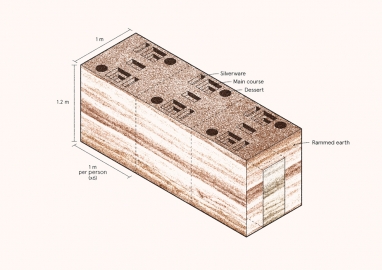Restaurant 0
Zero-Cost Restaurant in Viljandi: A Sustainable Showcase with a 15-Ton Rammed Earth Table.
Located in Viljandi's Old Town, Estonia, the project by kuidas.works repurposes 19th-century sausage shop ruins into a zero-cost restaurant for "Restaurant 0", a TV series emphasizing smart recycling. The design, completed in 7 days, showcases a 15-ton table using the rammed earth technique from local clay, complemented by sand-leveled floors and lime-painted walls. This sustainable endeavor underscores the design and building industry's ecological footprint, demonstrating the potential of sustainable architectural practices.
The primary challenge presented to kuidas.works was the creation of a restaurant with zero budget, finished in a mere 7 days, for the TV series "Restaurant 0". The location, an old sausage shop in Viljandi's historical district, required a design that blended with its historical context, while also reflecting modern sustainable principles. To address this, the design strategy relied on smart recycling and the use of locally available materials, ensuring minimal environmental impact. A central feature, the 15-ton rammed earth table, not only used traditional construction methods but also served as a key highlight, emphasizing the project's eco-friendly focus. The design also needed to accommodate a one-night-only event, making sure guests were aware of the ecological message of their dining experience. Through these strategies, the design met the client's requirements while promoting sustainable architectural practices.
The restaurant's primary material was locally-sourced clay, used to craft the standout 15-ton rammed earth table. This traditional technique, requiring only hand tools, emphasizes sustainability and cost-effectiveness. The earth, sourced from a nearby quarry, showcased Southern Estonian earth's yellow and ochre undertones, with darker red clay imported from Lithuania. Sand, another key material, was used for floor leveling, and graffiti-covered walls were neutralized using lime paint. This design ensures minimal burden on the environment; even if left in ruins, the rammed earth table would naturally degrade. Only 1% of the materials, specifically the tableware, might need future recycling. Maintenance is minimal: the table, made of durable rammed earth, requires little upkeep, while the lime-painted walls can be easily retouched. Sand floors can be periodically replenished. These choices not only promote sustainability but also offer a cost-effective solution, aligning with the project's zero-budget mandate.

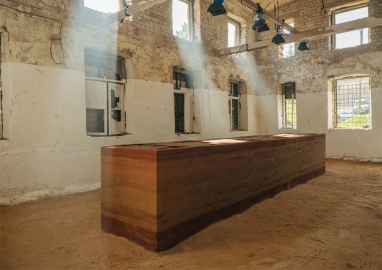 © Tõnu Tunnel
© Tõnu Tunnel
 © Tõnu Tunnel
© Tõnu Tunnel
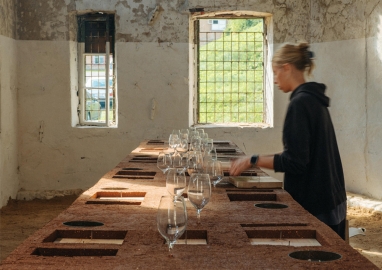 © Tõnu Tunnel
© Tõnu Tunnel
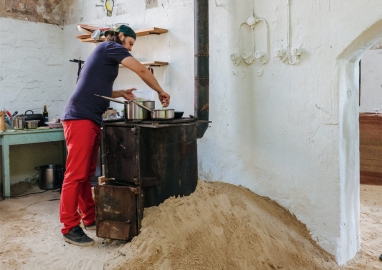 © Tõnu Tunnel
© Tõnu Tunnel
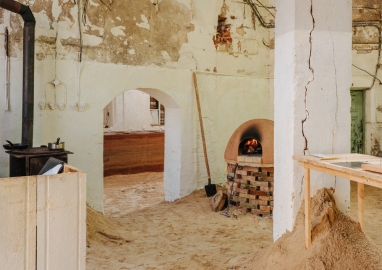 © Tõnu Tunnel
© Tõnu Tunnel
